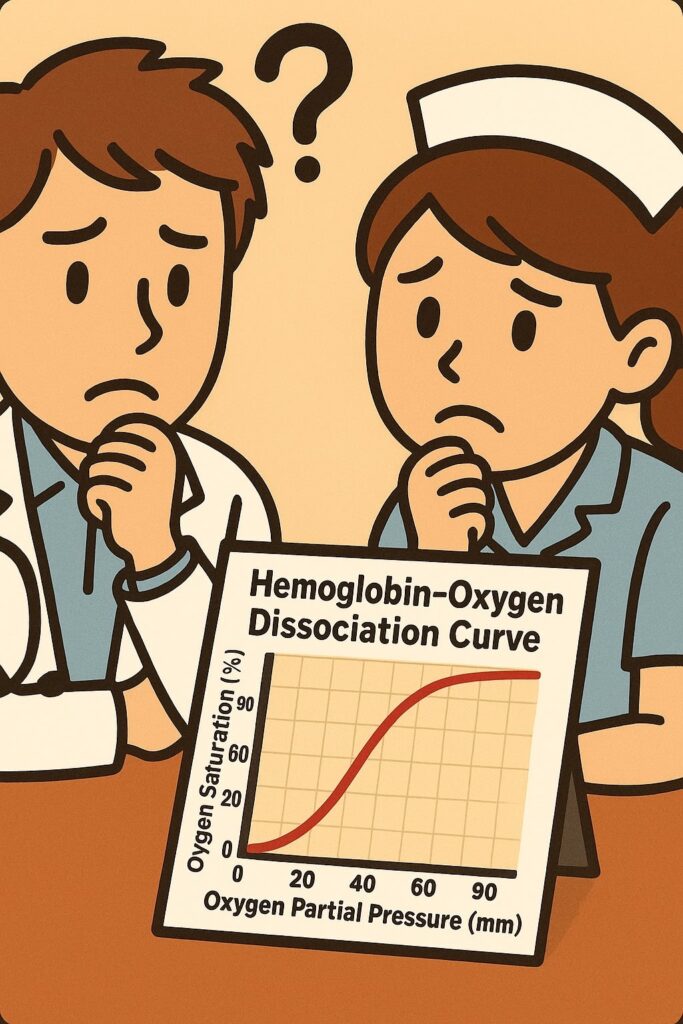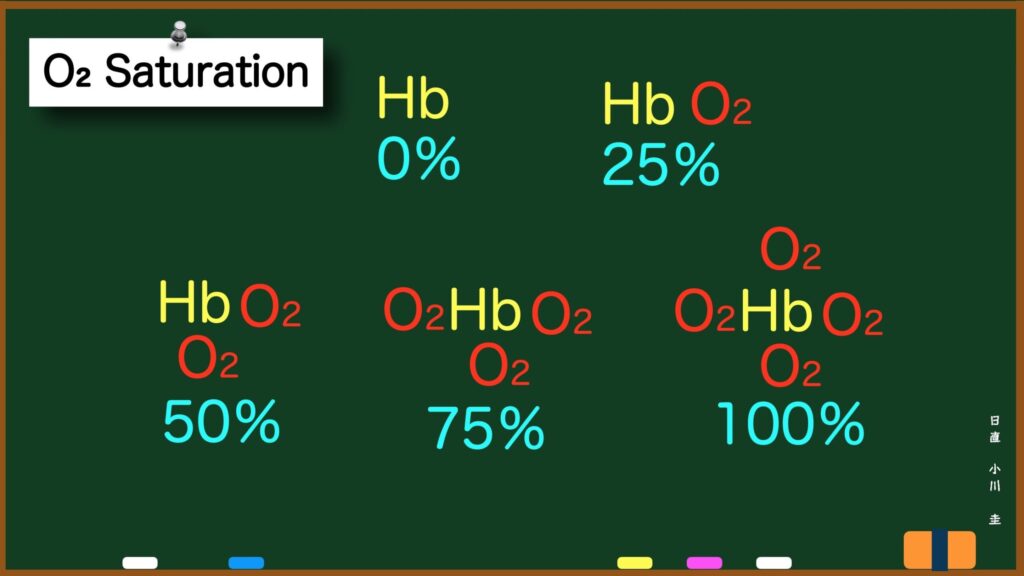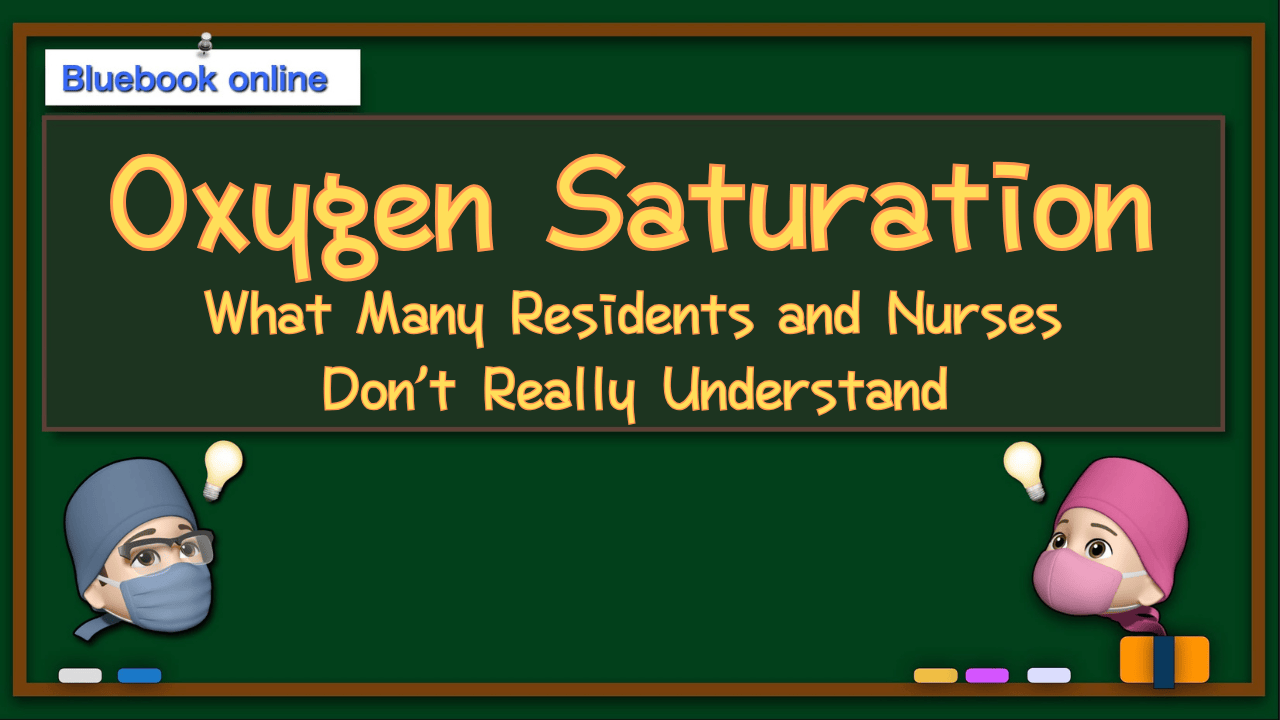👉👉 🇺🇸 All Posts 🇬🇧 / 🇯🇵 記事一覧 🇯🇵 👈👈
♦️ Introduction
Oxygen saturation is often called SpO₂ or simply “saturation.” Many residents and nurses focus only on the number, without fully understanding what it really means. Let’s review it in simple terms 👍.

♦️ The Formal Name: Hemoglobin Oxygen Saturation
Oxygen saturation represents how much of the hemoglobin in the blood is bound to oxygen. Strictly speaking, the proper term is hemoglobin oxygen saturation.
Similarly, the well-known oxygen dissociation curve should more accurately be called the hemoglobin oxygen dissociation curve.
In practice, hemoglobin oxygen saturation is measured with a pulse oximeter. For more precise measurement, arterial blood sampling is used to obtain the arterial oxygen saturation (SaO₂).
(We’ll skip the details of absorption spectroscopy and measurement principles—those can put you to sleep! 😅) Instead, let’s focus on what the percentage really means.
♦️ Think of Hemoglobin as a Car with 4 Seats
Each hemoglobin molecule can bind up to 4 oxygen molecules. Imagine hemoglobin as a car with four seats:

- All 4 seats filled → oxygen saturation = 100%
- 3 seats filled → 75%
- 2 seats filled → 50%
- 1 seat filled → 25%
- 0 seats filled → 0%
If we only looked at a single hemoglobin molecule, its saturation could take only one of these five values. With two hemoglobin molecules, there are 8 seats, and possible values become 9 (0%, 12.5%, 25%, …, 100%).
Because there are enormous numbers of hemoglobin molecules in the body, the number displayed on your monitor is essentially the average occupancy rate of all those “cars.” (Of course, we aren’t literally measuring every molecule one by one 😊).
♦️ How Much Oxygen Is Actually Used?🤔
In healthy individuals, arterial oxygen saturation is about 98–100%. In other words, hemoglobin is almost completely loaded with oxygen.
In contrast, venous oxygen saturation is around 70–80%. (If you’re monitoring mixed venous oxygen saturation via a pulmonary artery catheter, or central venous saturation via a CVC with oximetry, you’ll usually see numbers in this range… assuming you’re actually looking at them 😅).
This means that by the time blood returns to the heart, hemoglobin has usually given up only one oxygen molecule out of four. Under normal conditions, hemoglobin delivers one molecule to the tissues, then gets “reloaded” with another in the lungs.
However, if oxygen consumption increases (e.g., fever, sepsis, agitation), or if cardiac output decreases (so oxygen delivery cannot meet demand), hemoglobin will give up more oxygen, and venous oxygen saturation will drop. (I’ll cover the details of these scenarios in a future article.)
📝 Summary (Take Home Points)
- Oxygen saturation (SpO₂ / SaO₂) indicates how fully hemoglobin is loaded with oxygen
- One hemoglobin molecule can carry up to 4 oxygen molecules
- Normal arterial saturation: 98–100%; venous saturation: 70–80%
- Think of oxygen saturation as the “occupancy rate” of seats in a car — this makes the concept much easier to grasp

コメントを投稿するにはログインしてください。